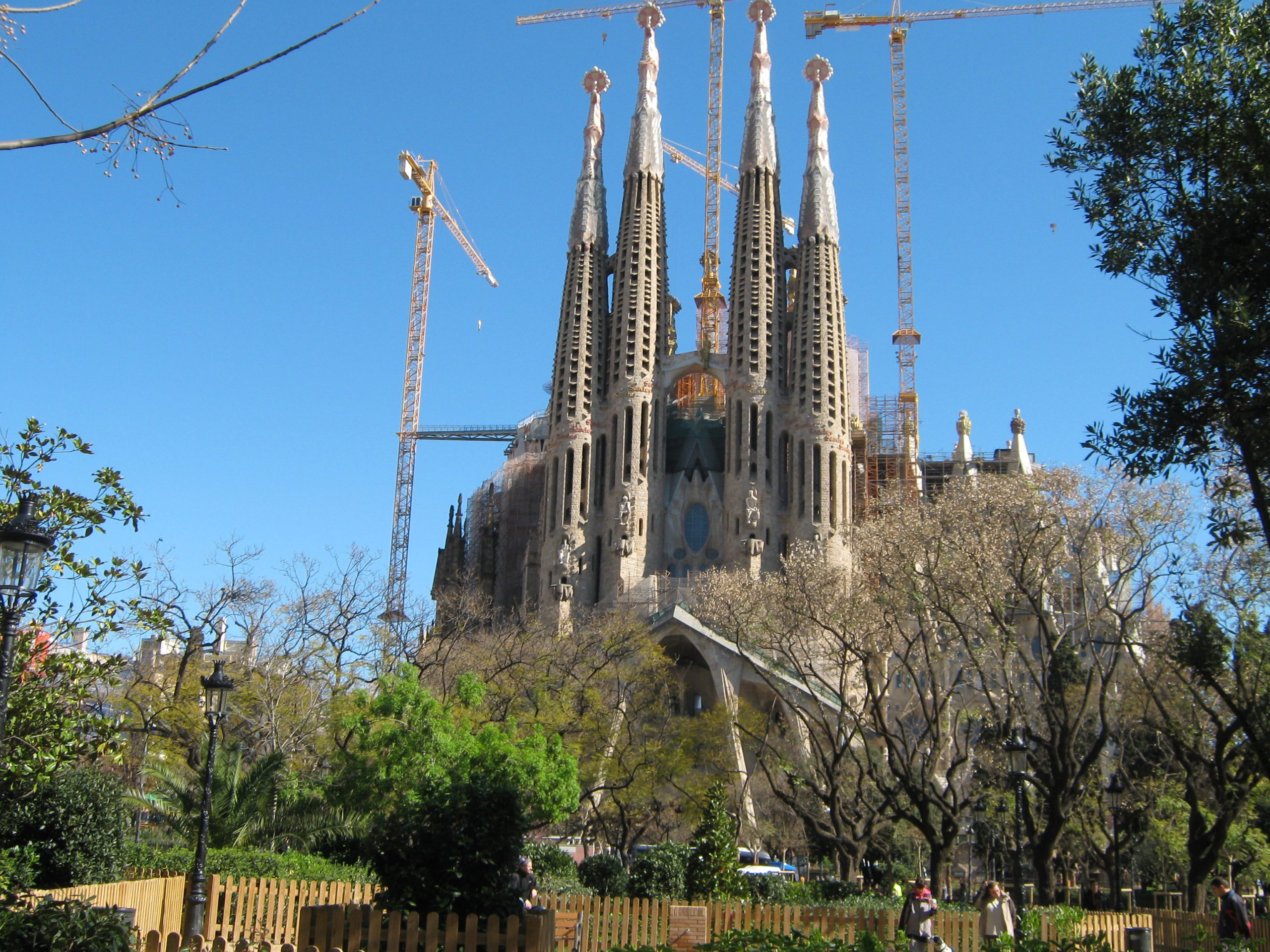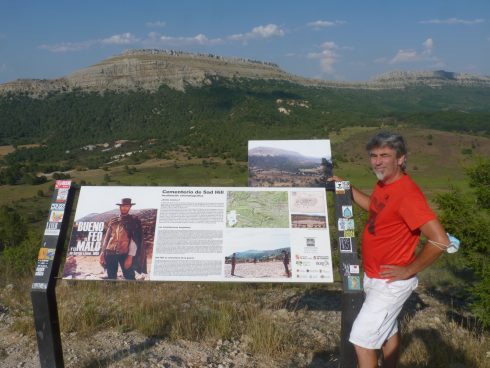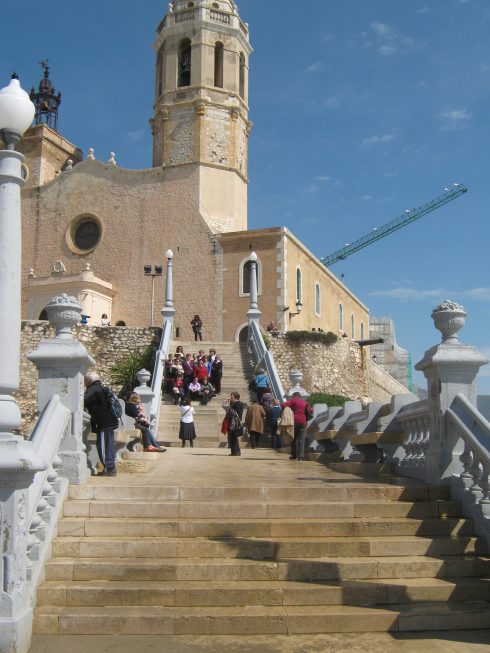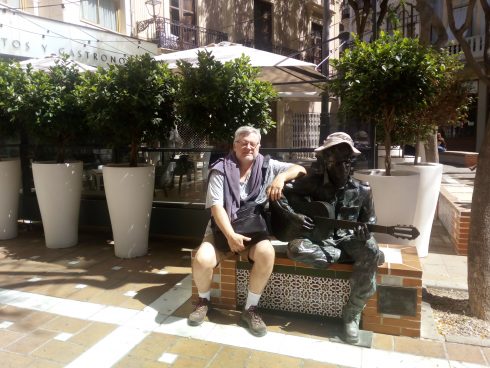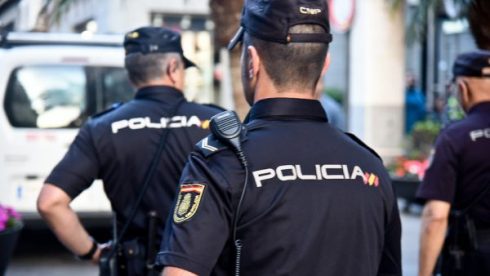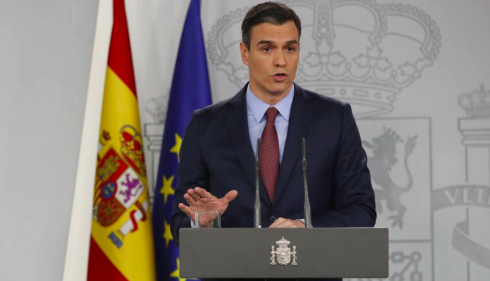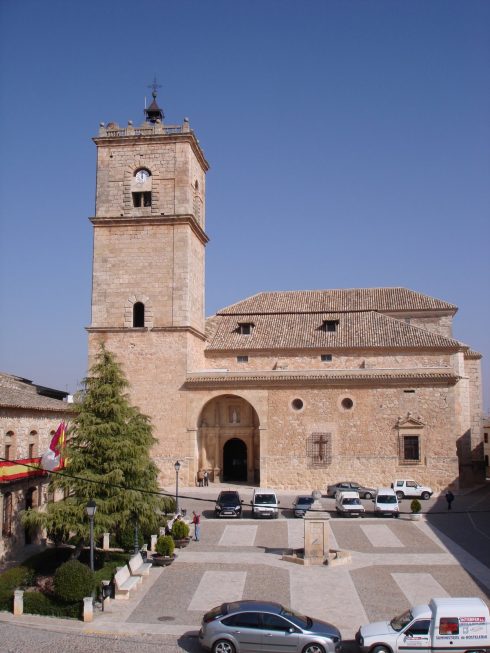When is a castle not a castle? When it’s a park, obviously!
Barcelona doesn’t exactly spring to mind as the setting for The Castle of Fu Manchu (1969), and yet that’s where the film, starring Christopher Lee, was shot
One of Gaudí’s masterpieces, Parque Güell, portrayed Fu Manchu’s castle in Turkey.
When Fu Manchu takes over the Governor’s castle at Anatolia, the assault takes place up the famous staircase with the ceramic dragon of Parc Güell, although some of the more watery parts were imported from the Parque de la Ciutadella, while Fu Manchu’s throne room is in fact the hall of columns known as La Sala Hipóstila.

The Passenger (1975) features a youthful Jack Nicholson and a sultry Maria Schneider.
Nicholson plays a journalist who exchanges his identity with a dead man and sets off on a journey to ‘find himself’ or lose himself, or whatever it is you do when in the full thrall of angst.
Many cruel people unfairly claim that very little actually happens in Antonioni films. This is patently untrue. People get up, sit down again and go for lots of long walks. There is also ample staring and waiting.
Schneider is supposedly an architecture student in the film, and she takes Nicholson to see some Gaudí architecture. They meet in the Palau Güell lobby, and then visit the roof of La Pedrera in the Paseo de Grácia.

Meals on Wheels (1984) was the first of two films that Jackie Chan made in Barcelona.
The opening credits make it clear where we are with the image of Gaudí’s emblematic Sagrada Familia cathedral. We return there later among the cathedral’s towers for the scene where the English gentleman in his bowler hat finally meets the girl and is held upside down over the edge by Jackie and his cohort.

The mental asylum where Jackie’s uncle is lodged is the Finca Güell, also designed by Gaudí.
Top Spanish director Bigas Luna delved into the horror film within a horror film genre for Anguish (1987) shot in Barcelona and Madrid.
An eye collector, yes that’s what I said, and his mother live in a modernist mansion, which in reality is the Casa Vicens, Gaudís first house designed in Barcelona, where the interior with its snails, pigeons and assassin show the full decorative extent of Gaudí’s artisanship.
Uncovered (1994) is based upon a book written by Spanish novelist Arturo Pérez-Reverte. The film is a thriller whose storyline centres on the game of chess and an old painting, which reveals its secrets, (hence the title), when being restored.
As the opening credits slip downscreen, we see some of the classic vistas of Barcelona, including, inevitably, Gaudí’s Sagrada Familia Cathedral.
Kate Beckinsale plays the restorer who sneezes any time a man tries to get serious with her, and who will see the human chess pieces dying off just when they begin to be suspected of the crimes.
In order to find a chess expert, Kate visits Gaudí’s Parc Güell, where on the terrace overlooking the city she finds a gypsy making mincemeat out of a Salvador Dalí lookalike.

Helping her is her gay mentor, whose shop and home is situated in Gaudí’s Casa Batlló in the Paseo de Gracia.

Despite the name, a lot of the inaction of Costa Brava (1995) takes place in Barcelona, as we are told the story of Anna, a tour guide who meets Montserrat, an Israeli teacher in Barcelona, and their relationship, involving occasional trips to the Costa Brava.
From her privileged rooftop with the spectacular towers of Gaudí’s Sagrada Familia Cathedral we listen to Anna’s theatrical monologues.
At various points, and probably to show that Anna really is a tour guide, we see some amateur video shots of the city’s tourist attractions, including Gaudí’s La Pedrera and Parc Güell.
Monserrat and Anna’s first serious problem, and potential breakup, takes place in Avinguda Gaudí, with the Sagrada Familia in the background.
Faust: Love of the Damned (2000) raises an important moral issue; does seeing your girlfriend murdered justify selling your soul to the Devil; and even more important, can the Devil be trusted?
Filmed in and around Barcelona, the elegance of some of the architecture contrasts with the gruesomeness and gore.
The film is in fact supposed to be set in an anonymous American city, although the modernist architecture of Gaudí’s Palau Güell gives the game away when we enter the lobby of the Devil’s quite tasteful lair.
This is definitely not a film for those who can’t stand the sound of blood: pitter patter, pitter patter.
Where else could Gaudi Afternoon (2001) be set if not in Barcelona, where Antoní Gaudí created his greatest works?
Judy Davis, one of Woody Allen’s favourite neurotic actresses, (‘Celebrity,’ ‘Deconstructing Harry,’ ‘Alice,’ ‘Husbands and Wives’) plays an American writer based in Barcelona, who receives a plea from a stranger for help.
The plot is just a trifle complicated, so pay attention.
Early on Cassandra (Judy Davis) takes a walk with Frankie, the woman who wants to hire her as a detective and turns out to be a man, although in the film he is played by a woman.
Actually, all the characters are a bit bizarre, even more so than Allen’s, and if he liked this film that would explain why he used so many of the same locations in ‘Vicky, Christina, Barcelona.’
Ben, who we at first think is a man but turns out to be a woman played by Lili Taylor, is living with Hamilton, who we believe to be Ben when we first see him, and straight, then gay and finally bi. Ben is living in Gaudí’s La Pedrera in Paseig Gracia, although some of the interiors are taken from Gaudí’s Casa Batlló. The fight between Ben and Frankie, who actually love each other, takes place on the famous turreted roof of La Pedrera.

Before we discover who Ben is, Cassandra follows the man who is not Ben to Gaudí’s Parc Güell, where we see the real Ben and her lover April, played by Juliette Lewis, who doesn’t really love her. During these scenes we see the famous ceramic dragon fountain, the terrace overlooking the city and the colonnades, fortunately free of the thousands of tourists who are usually draped all over them.
One of Cassandra’s meetings with Frankie takes place in the Crypt of Gaudí’s unfinished masterpiece, the Sagrada Familia Cathedral, the facades of which are seen on various occasions, such as when Cassandra is on her way to the meeting in the crypt, walking along Avinguda Gaudí, with the towers of the Cathedral in the background.
Later there is another visit to Parc Güell, where Frankie chases April, and finally, at Barcelona airport, the postcard Cassandra chooses is a photograph of Gaudí himself.
Not so complicated after all.
The Bourne Identity (2002), first of the interminable series, was the start of Matt Damon’s love affair with Spain, to which he would return to make more Bourne stuff and Green Zone.
Clive Owen is ‘The Professor,’ a Treadstone assassin based in Barcelona. We briefly see the statue of Christopher Columbus in the port and the Sagrada Familia Cathedral, when Clive is contacted by the villains (or parallel American government), as you prefer.
Although a French film, almost half of the dialogue of L’Auberge Espagnole (2002) is in English.
A group of Erasmus students share a flat in Barcelona and in the brief intervals between sex, drugs, rock and roll and more sex, they study; hence the word ‘student’.
On his first date with Anne-Sophie, Xavier takes her to the famous ceramic terrace of Parc Güell, where he returns with her later to ravish her. Keeping in with the Gaudí theme, he also takes her to the Sagrada Familia cathedral.
Face of Terror (2003) is a wholly believable plot in which an American police officer travels to Barcelona looking for his lost sister, who may have become a victim of a terrorist cell using girls as bombs.
At various stages the scenes are interspersed with views of the city, the first one including the Sagrada Familia Cathedral and La Rambla. After a brief interlude in Los Angeles to meet our star, we are back to aerial views of the port and our hero checking into the Hotel Colon. He visits his missing sister’s flat, which we are supposed to believe is in Gaudí’s famous Pedrera building,
Perfume: the Story of a Murderer (2006) is ostensibly set in France, although Paris in the film is largely the medieval Gothic Quarter of Barcelona and the scenes in Grasse (the French perfume city) were mostly shot in Figueres and Girona.
Grenouille locates a perfume shop by following his nose; today you can do the same and find it in the Calle del Vidre 1, although it sells herbs rather than perfume, and is called Herboristería del Rey, founded in 1823.
The shop is at the corner of Plaza Reial, an impressive arcaded square which was built in 1848 by architect Francesc Daniel Molina; before that it had housed a religious convent. You can still see the street lamps there by architect Antoni Gaudí.
Vicky, Cristina Barcelona (2008) used some of Barcelona’s most emblematic locations such as Passeig de Gracia, where some of Gaudí’s incomparable architectural works can be seen. At Casa Milà – ‘La Pedrera’, Vicky, Cristina and Judy admire the views of Barcelona from the rooftop with its amazing chimneys, from where the Sagrada Familia cathedral can be seen.
The façade of La Pedrera in the Passeig de Gràcia appears again when Vicky and Doug meet with two American friends, Sally and Adam.
When Vicky and Juan Antonio (Javier Bardem) meet again after their trip to Asturias, the scene features the famous ceramic dragon on the steps of Parque Güell, which Gaudí designed what was supposed to be a housing estate for the rich in the English style.
The famous ceramic dragon can be seen although the water streaming from its mouth had to be slowed down as it was too loud for the microphones. The gatehouse and Bugaderia viaduct also feature.
Gaudí’s Finca Güell at the end of Avenida Pedralba, also makes a brief appearance when Vicky is waiting for Juan Antonio (Javier Bardem) to arrive in his sports car outside its famous cast iron dragon gate.

We also see Vicky and Cristina taking photographs of the Nativity façade of Gaudí’s unfinished Sagrada Familia Cathedral from the Plaça de la Sagrada Família.
In Altamira (2016) Antonio Banderas leads the cast, which includes Rupert Everett as the evil(ish) Monsignor, in a film directed by Oscar winner Hugh Hudson, he of ‘Chariots of Fire.’
The film tells the story of the discovery in 1879 of the famous caves with their prehistoric paintings, and of the shallowness of human nature.
Also appearing is one of architect Gaudí’s few buildings outside Catalonia, El Capricho, a summer house built in the 1880s at Comillas. It is here that Banderas attends a meeting of enlightened scientists in Paris at the beginning of the film.
And it is here that Thelma and I will visit in July 2020.
An American archaeology professor is the hero of this film; now why does that ring a bell?
In Foe/The Curse (2016) Johan Meyer visits Barcelona looking for work and is contracted to translate a document by the mysterious Ramku. Their first meeting takes place at the Finca Güell, with Gaudí’s famous dragon gate.
One of the things I like about Gaudí is that he didn’t do too well in school. Like Einstein, he was no more than an average student. In 1875 Gaudí was expelled from an examination in which he was supposed to be designing a cemetery gate; but the dreamy, young man devoted far too much attention to details of the mourners’ faces or the branches of the cypress trees for the liking of his professors.
But what I really like about Gaudí is that he was a mean, badly dressed religious fanatic, a humourless celibate and a teetotal misogynist who was notoriously bad company. So, there’s still some hope for the rest of us.
The city of Barcelona finally demonstrated its undying affection for Gaudí by having one of its distinctive municipal tram cars run him over on Monday June 7th, 1926. He died unrecognised at first 3 days later, on June 10th.
Click here to read more Silver Screen Spain (on The Road With Thelma) News from The Olive Press.

